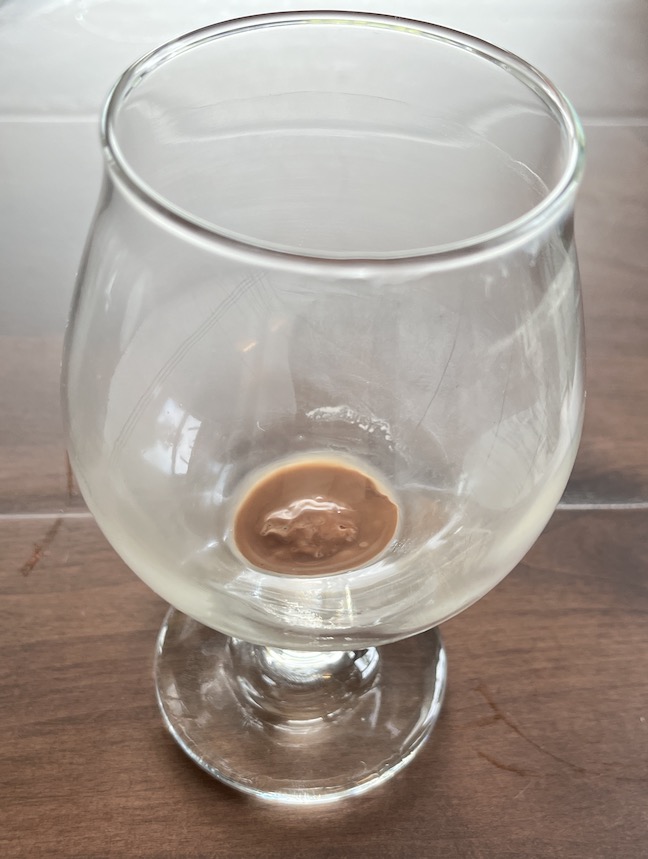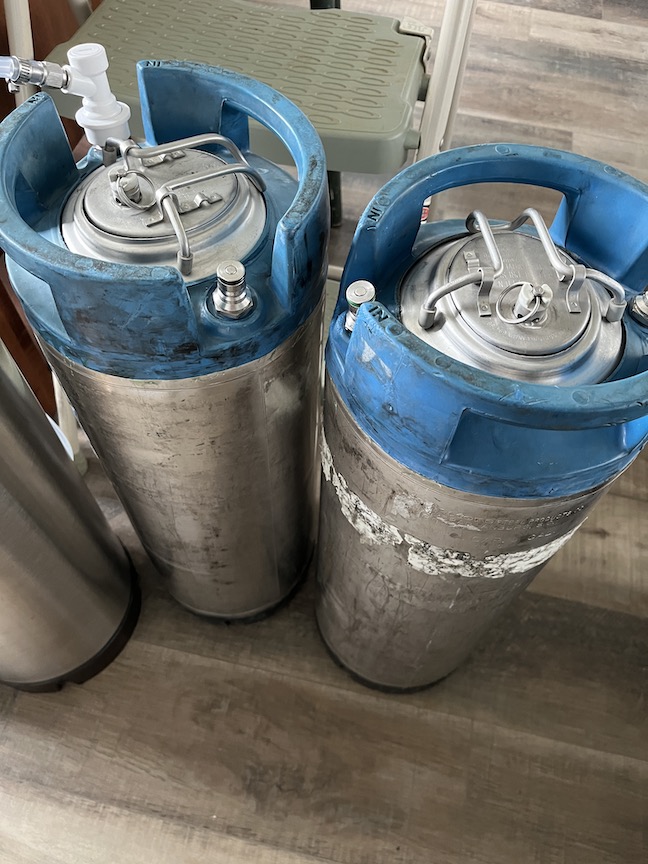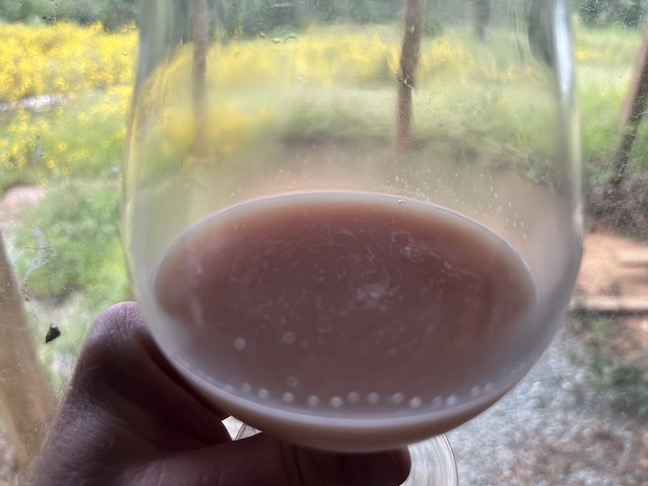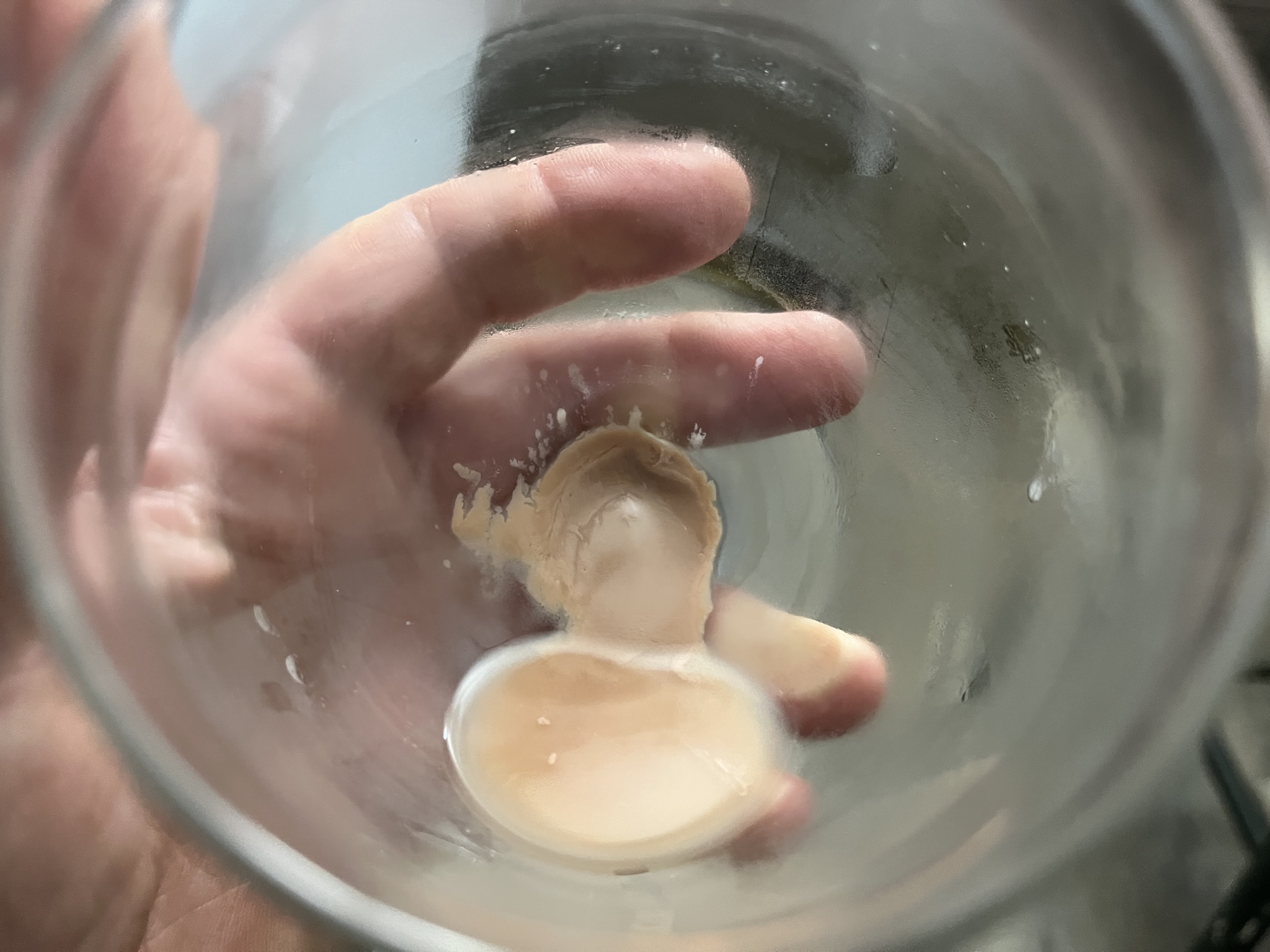... fun stuff - nothing new here just a journal type entry ...
This started out as an experiment and the results are in - at least for ciders as I make them it's been observed that as a keg is served sediment will
continue to resettle around the dip tube. This tulip glass (which looks larger than it is) was poured halfway three days ago and received the usual "
first pour of-the-day blast". Rather than throw it out, put into the fridge to settle
This morning poured contents off the sediment. What observation shows is that if a few ounces are poured one time each day the same amount of sediment will be produced each day until either the sediment is eliminated from the keg or the keg is emptied of liquid. So cider sediment is
efficiently resettling around the dip tube again and again and again. That's the answer to the original goofy experiment
Floating dip tube? Sure, great. However seems to me, you're just choosing to get your sediment hit at the end and not every day you pour. But, if it can be done, I'd rather eliminate original fermentation sediment, and it can be done. I wouldn't deceive myself and expect that if doing a transfer from ferm to serving and letting it sit for six months that there still wouldn't be some additional settling - some yes, but not a mountain, not a blast with every "
first pour of-the-day", and it wouldn't be the original fermentation sediment. Finally, I worry about what would happen to a flexible dip tube left in an alcohol based beverage for half a year. Would it lose flexibility and become frozen into position? Could it kink? Could the float fail? Could a synthetic material leach into the beverage? And anyway, sooner or later it's going to crash into the sediment
Plan is to designate two kegs to be fermenters. Received these two relatively rough condition cornys six years ago (and they're the only two this color). And as a testament to how well these vessels are made, one of these has a noticeably bent post and at the time the post was bent the dip tube was also bent
So two cornys ferms, one with an already bent dip I'll trim, and heck, dips are only $20 so it's not the end of the world whatever happens. Thinking I'll start at about 3/8" and there'll be experimentation to find the compromise length. And what works for what I typically make might not work for someone else. Then of course do
@Bassman2003 's procedure transferring out of ferm to serv - which will be my procedure here forward. Then I'd have a conventionally configured corny, without the fermentation based sediment, nothing unpredictable that could fail, ready to consume or store
....thanks everyone for previous replies and insights -
















